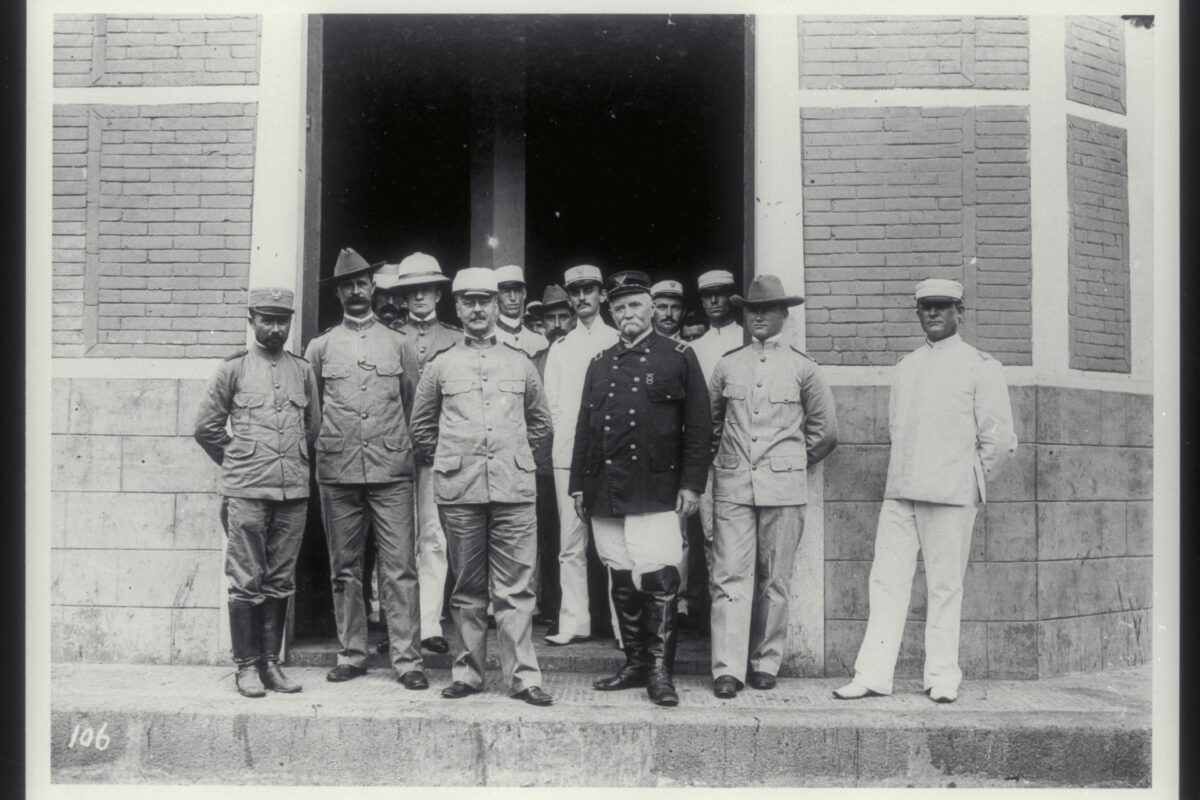October 1899: Renewed American advances during the Philippine-American War

Photo from the University of Wisconsin
The rainy season of 1899 had taken its toll on the morale of American forces outside of San Fernando in Pampanga Province. Although the American offensive operations were limited during rainy season, the revolutionaries were still inflicting deaths and severe wounds on the American soldiers.
When the rainy season started to abate in September 1899, the outlook for the Americans changed abruptly. The revolutionary forces were defeated at the town of Angeles on September 20, 1899. General Emilio Aguinaldo and most of his troops were able to evade capture by the Americans. The United States soldiers continued and expanded its drive to the north.
In October 1899, it was time for General Elwell Otis to reevaluate his strategy and tactics to defeat General Emilio Aguinaldo. General Otis knew that the revolutionaries were demoralized after the murder of General Antonio Luna in June. Some Filipino officers had surrendered to the American forces. Aguinaldo now had personal command of the Army of Liberation. The Philippine Revolution was in a state of flux and uncertainty. General Otis chose to take advantage of the problems within the Army of Liberation.
General Otis also calculated that he now had military superiority in the Philippines. The National Guard volunteers from several states had been replaced with United States Volunteers. The US Volunteers had enlisted for the Philippine-American War not the Spanish-American War. There were now 35,000 American soldiers under his command. The logistical problems to support the American troops had been rectified.
Although General Otis was initially skeptical of using the Macabebe Scouts, he had changed his mind dramatically. The Macabebe Scouts continued to prove their value and effectiveness. The scouts provided valuable intelligence on the revolutionaries. They were experts in navigating with small boats called bancas through rivers like the Pampanga River (Rio Grande) and swampy areas.
The Macabebe Scouts displayed courage and valor during the battles at Libutad and San Isidro. General Otis was very impressed with the performance of the Macabebe Scouts. Major Matthew Batson was ordered to recruit more scouts in Macabebe. There was an overwhelming response in the town. Many young men in Macabebe enlisted as scouts for the Americans.
After reviewing the geography north of Angeles, General Otis’ objective was to trap General Emilio Aguinaldo before he could escape into the rugged and isolated mountains in Northern Luzon. If the Americans failed in trapping Emilio Aguinaldo, then the war could continue indefinitely.
To trap General Aguinaldo and his Army of Liberation before they could escape into the mountains, General Otis designed a three-pronged attack. The greatest difficulty of the American plan was coordination and communication. If the Americans failed to coordinate and communicate with each prong, there would be multiple escape routes for General Aguinaldo and the revolutionaries.
General Arthur MacArthur commanded the first prong of the attack. The general was tasked to keep the pressure on Aguinaldo’s troops in Central Luzon. The objective was to push the revolutionary forces farther north. General MacArthur was able to force General Aguinaldo to retreat north and form a temporary capital in Tarlac. Shortly after, General MacArthur forced General Aguinaldo to retreat north again and establish a temporary capital at Nueva Vizcaya.
The second prong of General Otis’ plan was an amphibious landing by General Loyd Wheaton at Lingayen Gulf. This coastal landing site was approximately 150 miles north of Manila. Once the troops disembarked from US Navy vessels at Lingayen, they would proceed south with the intent to meet up with the first and third prongs. General Wheaton and his forces proved to be too slow in their advance. They did encounter some revolutionary opposition. This delay allowed too many escape routes for General Aguinaldo.
General Henry Lawton commanded the third prong. This prong was designed for cavalry soldiers. Speed and mobility were crucial for the success of this prong. The goal was to block and close off all mountain passes in Northern Luzon.
In theory, if all three prongs worked effectively together, General Aguinaldo would be trapped by one or potentially all three prongs.
The American three-prong offensive commenced on October 12, 1899. Coordination and communication among the participants proved to be difficult. The offensive did extend into the next month. The wily General Emilio Aguinaldo demonstrated that even the best designed military plans do not necessarily work.
Dennis Edward Flake is the author of three books on Philippine-American history. He is a Public Historian and a former park ranger in interpretation for the National Park Service at the Eisenhower National Historic Site in Gettysburg, PA. He can be contacted at: flakedennis@gmail.com

